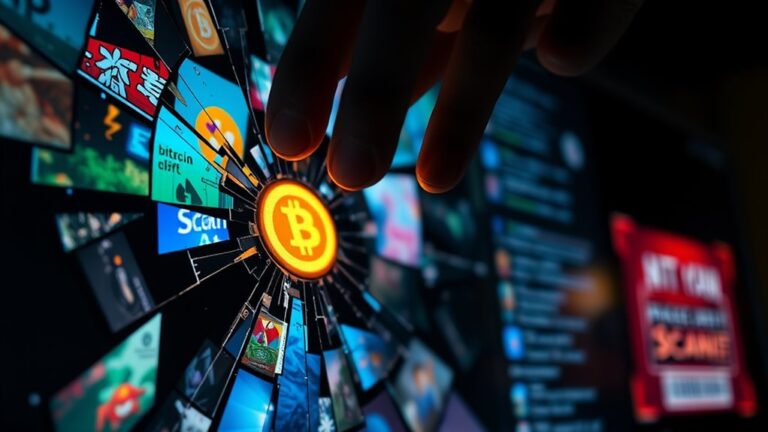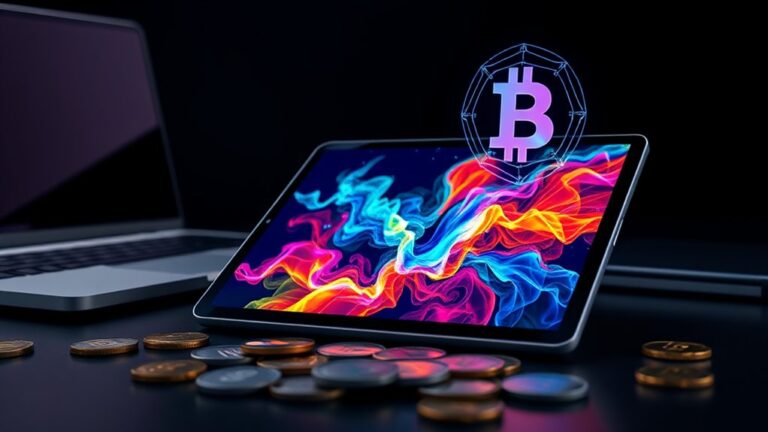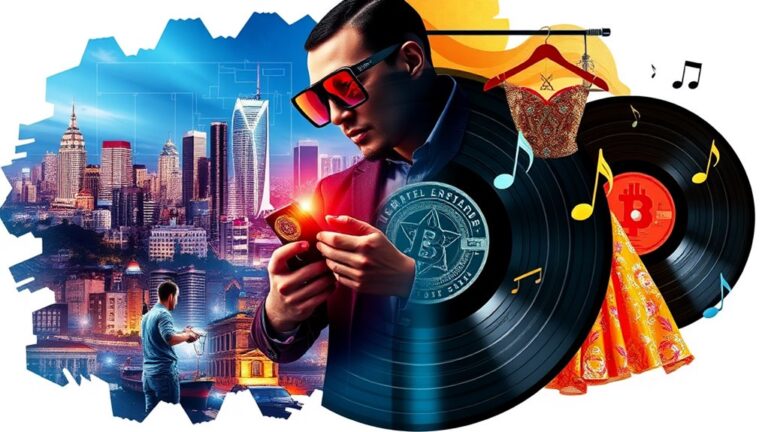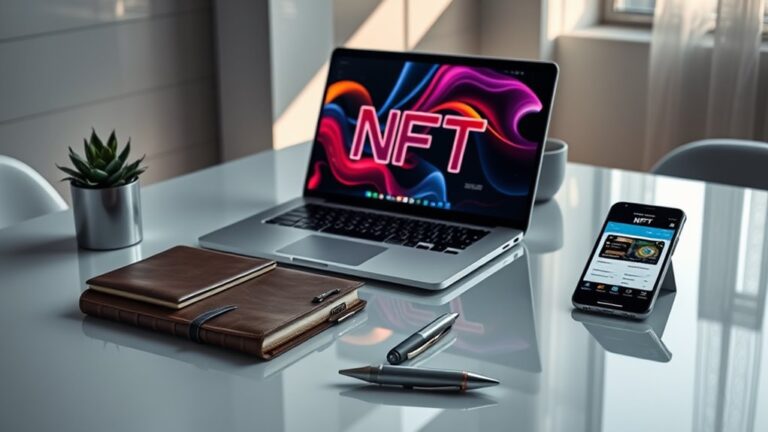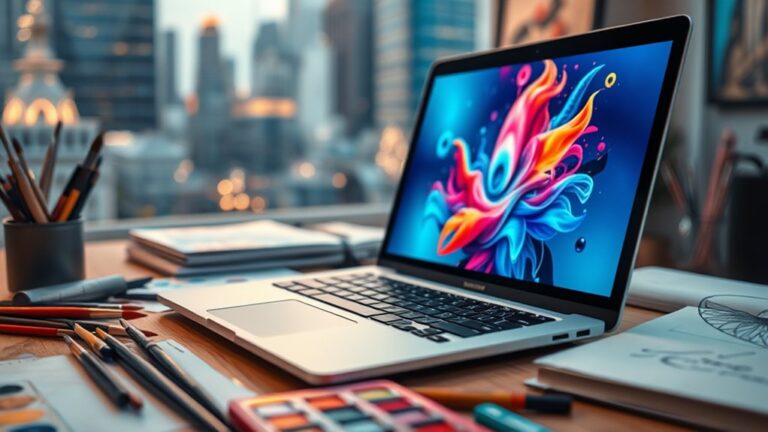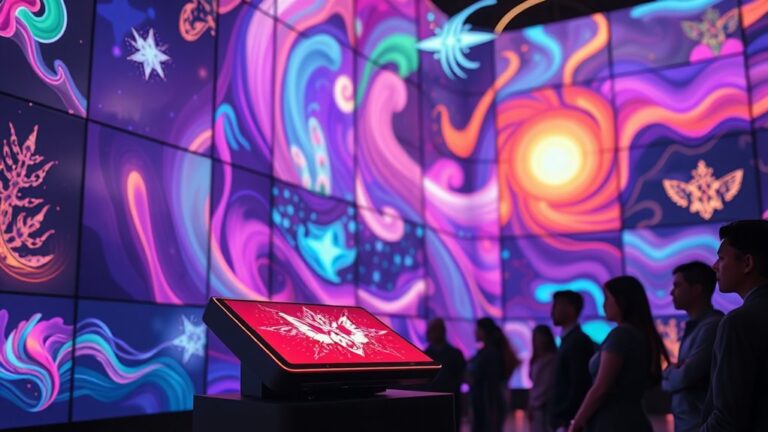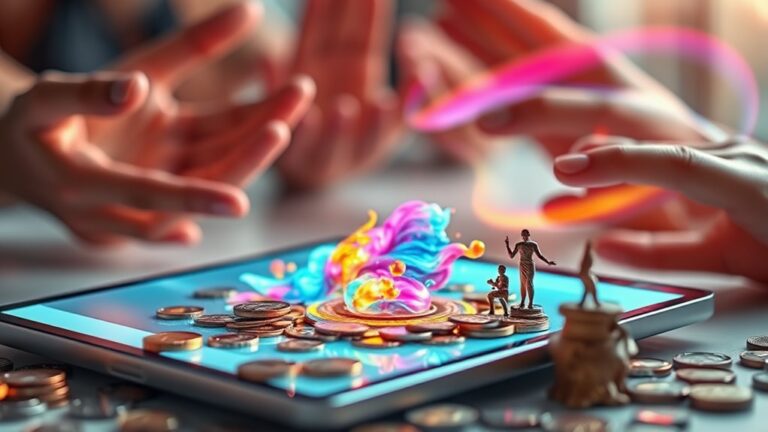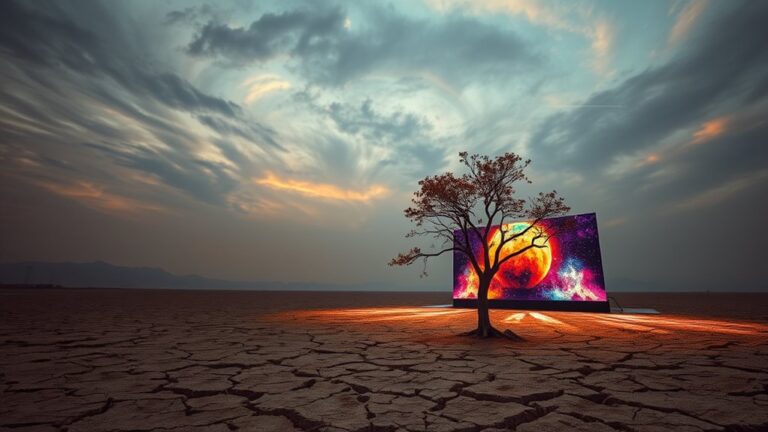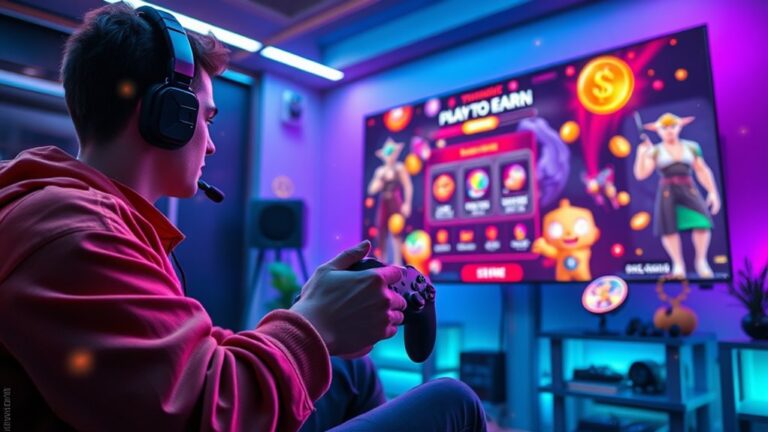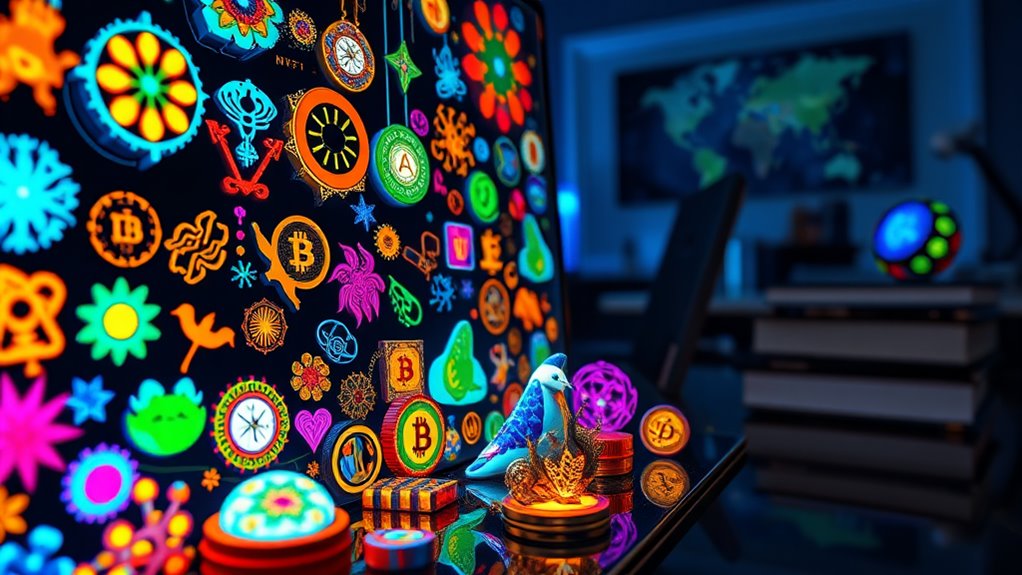
NFT Collectibles: What Are They Worth?
NFT collectibles are unique digital assets valued for their scarcity, creator reputation, market demand, and cultural significance. The global NFT market saw substantial trading volume, with notable sales such as Beeple’s *Everydays*, priced at $69.3 million. As of 2023, average daily sales remained significant, with collectibles priced under $200 making the market more accessible. Projections suggest continued growth, indicating that understanding these factors can provide insights into their worth and future developments in the sector.
Key Takeaways
- NFT value is influenced by scarcity, with limited editions generally commanding higher prices due to exclusivity.
- Creator reputation significantly impacts NFT worth; renowned artists often sell their works for millions.
- Market demand fluctuates based on trends, sentiment, and the fear of missing out, affecting pricing.
- Utility, such as exclusive content or experiences tied to NFTs, enhances their desirability and value.
- Cultural significance and emotional connections can elevate the perceived worth of certain NFT collectibles.
Understanding NFT Collectibles and Their Appeal
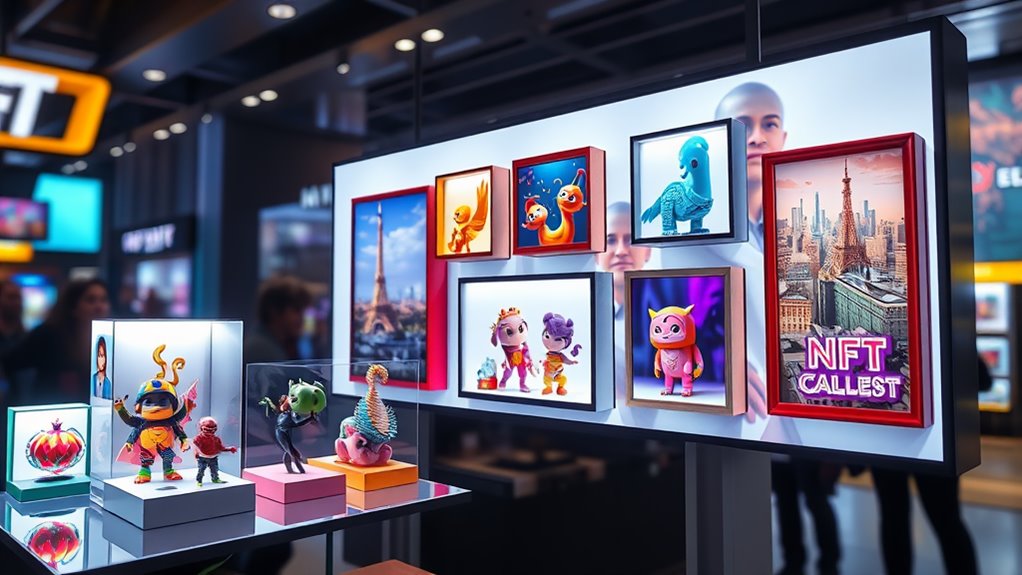
The emergence of NFT collectibles has transformed the landscape of digital ownership, introducing a new paradigm for valuing unique assets. Non-fungible tokens (NFTs) are distinct digital assets stored on a blockchain, certifying ownership and authenticity.
Unlike cryptocurrencies, NFTs cannot be exchanged for one another, as each possesses unique attributes. This non-fungibility contributes to their collectibility, encompassing digital art, music, and various forms of content.
NFTs stand out as unique digital assets, enhancing their collectibility across art, music, and diverse content forms.
NFTs are securely recorded on a decentralized ledger, promoting transparent ownership. Their appeal is amplified by the notion of scarcity, which enhances their value. Additionally, NFTs are making waves in supply chain management, enhancing product authenticity and tracking.
Categories of NFTs include art, game items, sports collectibles, and even real-world assets, further diversifying their significance in today’s digital marketplace.
Factors Influencing the Value of NFT Collectibles
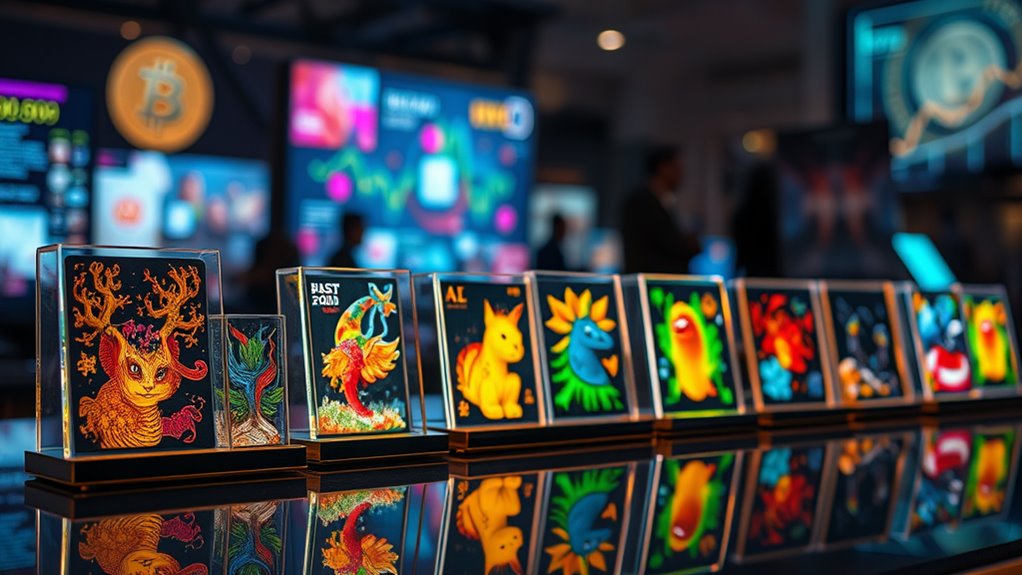
What factors contribute to the value of NFT collectibles in the rapidly evolving digital marketplace? Several key elements influence their worth.
First, scarcity plays a significant role; limited editions and unique attributes create exclusivity, making these NFTs more desirable.
The reputation of the creator also impacts value, as renowned artists and their successful track records can command higher prices.
Market demand is driven by trends, sentiment, and the fear of missing out, which can lead to bidding wars.
Additionally, utility adds value; NFTs offering access to exclusive content or experiences are more appealing.
Finally, cultural significance, including historical value and emotional connections, enhances desirability, making certain NFTs particularly sought after in the marketplace. Furthermore, real-world asset tokenization is emerging as a key trend, further diversifying the NFT landscape and increasing their investment potential.
Market Trends and Sales Statistics
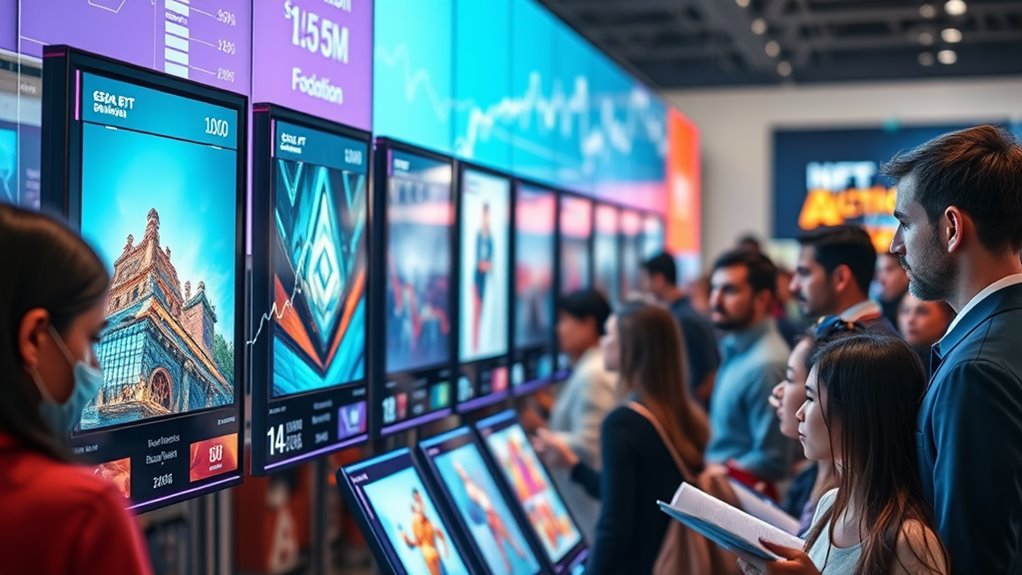
Market trends and sales statistics reveal a complex landscape for NFT collectibles, marked by both significant growth and volatility.
The global NFT market reached $57 billion in trading volume in 2022 but saw a sharp decline of 76% by 2024. In 2023, the market size was approximately $26.9 billion, with monthly sales around $1.8 billion.
Despite these fluctuations, about 19,000 NFTs are sold daily, a notable decrease from 225,000 daily sales in September 2021. Curiously, half of all sales are priced under $200, indicating broader accessibility.
Projections suggest that the market could grow to $80 billion by 2025, highlighting the potential for recovery and long-term viability in the digital economy as mainstream adoption increases. Additionally, the rise of utility NFTs is expected to contribute significantly to market dynamics as they offer more than just ownership, providing access to exclusive events and real-world assets.
Notable NFT Collectibles and Their Price Points
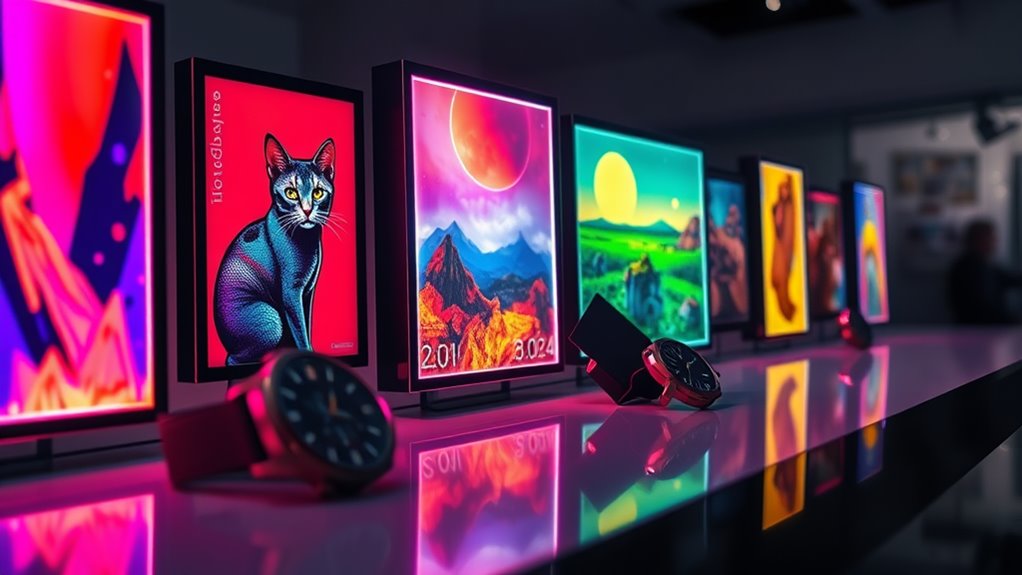
Notable NFT collectibles represent a significant segment of the digital art and collectibles market, showcasing both high-value sales and the diverse range of works available.
Among the top sales, Beeple’s *Everydays: The First 5000 Days* achieved a staggering $69.3 million, making it the most expensive NFT ever sold. Other notable pieces include CryptoPunk 7523, which sold for $11.754 million, and the Bored Ape Yacht Club collection, fetching $24.393 million at auction.
XCOPY’s *Right-click and Save As Guy* highlights the appeal of unique animations, selling for $7 million. The CryptoPunks series continues to command high prices, with CryptoPunk 8857 selling for $6.63 million, emphasizing the ongoing interest in iconic and rare digital assets. The process of minting NFTs allows artists to create verified ownership of their work on the blockchain, contributing to the value of these collectibles.
The Future Outlook for NFT Collectibles
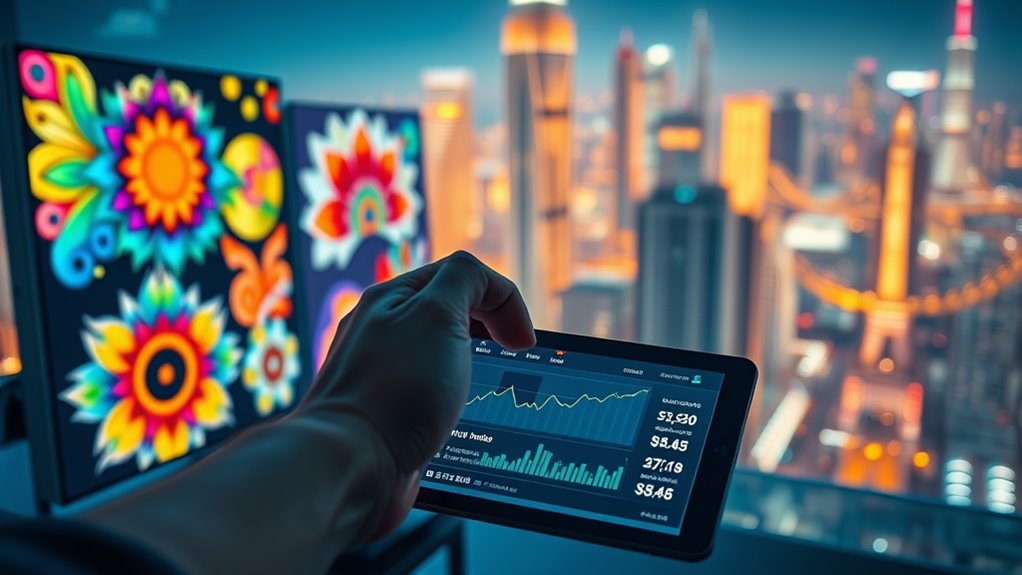
As the digital landscape continues to evolve, the future outlook for NFT collectibles appears promising, driven by significant market growth and technological advancements. The global NFT market is expected to expand substantially, reaching approximately $247 billion by 2029, with collectibles remaining a significant component. Additionally, AI integration and blockchain technology will enhance user experience and security. Furthermore, the ability to verify music ownership through blockchain creates new opportunities for artists and fans alike.
| Trends | Projections |
|---|---|
| AI-generated content | $61 billion by 2025 |
| Blockchain transparency | $8 billion sports NFTs by 2031 |
| Growing user base | 11.6 million users by 2025 |
| Digital ownership appeal | 30% CAGR through 2029 |
Frequently Asked Questions
How Do I Start Collecting NFT Collectibles?
To begin collecting NFTs, one must first acquire cryptocurrency, select a digital wallet, and choose a marketplace. Understanding the types of NFTs and engaging with communities enhances the collecting experience and informs future purchases.
What Platforms Are Best for Buying NFT Collectibles?
When considering platforms for buying NFT collectibles, OpenSea, Rarible, Magic Eden, and Crypto.com stand out for their diverse offerings, user-friendly interfaces, and community engagement, making them ideal choices for both novice and experienced collectors.
Are There Risks Involved in Investing in NFT Collectibles?
Investing in NFTs involves significant risks, including market volatility, speculative pricing, ownership complexities, potential fraud, and liquidity challenges. These factors can lead to unpredictable returns and exacerbate the difficulties of valuing unique digital assets.
Can NFT Collectibles Increase in Value Over Time?
The potential for NFT collectibles to increase in value over time depends on factors like scarcity, market demand, and cultural relevance. Analysts suggest that growth is likely, influenced by evolving trends and increasing user adoption.
How Do I Verify the Authenticity of an NFT Collectible?
To guarantee an NFT collectible’s integrity, one might explore its metadata, verify creator signatures, and consult reputable verification services. Engaging with community insights can further illuminate authenticity and safeguard against potential misrepresentation.
Conclusion
To summarize, NFT collectibles have emerged as a significant part of the digital economy, attracting both enthusiasts and investors. A notable statistic reveals that the NFT market generated approximately $41 billion in sales in 2021 alone, highlighting its rapid growth and popularity. As factors such as rarity, creator reputation, and market trends continue to influence their value, the future of NFT collectibles remains uncertain yet intriguing, inviting further exploration and understanding in this evolving digital landscape.

